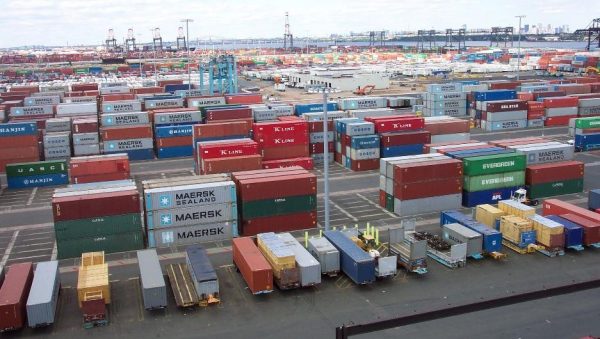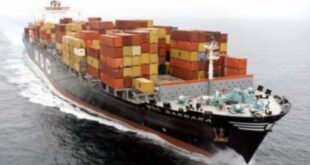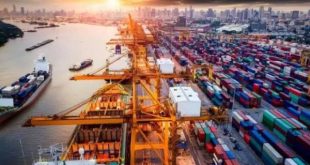Shippers Guide is the learning page of MMS Plus. Here we answer the five W’s and H of several issues in the maritime and aviation industry. This week we are unravelling the difference between Maritime, Shipping, Freight, Logistics and Supply Chain and how it is all connected, starting with some simple definitions of these terms.
To the novice, these industries terms are same or similar and it might come across that there is no difference between Maritime, Shipping, Freight, Logistics, Supply Chain and Trade.
But once you are involved in the business or know about these businesses, you will understand that these are very different industries terms with different workings, assets, architecture, requiring very different sets of qualifications, experience, expertise, knowledge and attitudes.
Maritime Industry
It is fair to say that Maritime Transportation has been and still remains the backbone of global trade and has been so since the Egyptians, Greeks, Romans, Arabs, Indians, Chinese, Europeans all started sailing and improvising the sailing methods from sailboats, dhows, long boats, dragon boats, steamships to the current ULCVs, VLOCs, VLCCs etc.
Maritime transportation is a derived demand whose main purpose is to support trade, business and commerce – whether global or domestic, whether cargo or people.
An estimated 89.5% of global trade is carried by sea.. As per UNCTAD figures, in 2019, although the maritime trade growth and port traffic growth were down, world seaborne trade reached a volume of 11 billion tons with a predicted growth of +2.6% in 2019 and an annual average growth of +3.4% for the period 2019-2024.
An estimated 793.26 million TEUs were handled in container ports worldwide in 2019 and as of now there are 6,145 active ships carrying 23,657,724 TEUs around the world.
The growth, numbers and the volume involved makes the maritime industry one of the most globalized industries in the world in terms of ownership and operations.
Not just in terms of ownership, the Maritime industry also provides employment for an estimated 1.65 million seafarers working in the global merchant fleet across the world.
Shipping
As briefly defined above, Shipping is the act of carriage of cargo from point A to point using the ships which falls under the Maritime industry.
Cargoes are carried by various types of ships all around the world. They are Oil Tankers, Dry Bulk Carriers, General Cargo Carriers, Container Carriers, Gas Carriers, Chemical Tankers, Off Shore Vessels, Ro-Ro ships, Ferries/Passenger Ships Others.
All these ships are operated by shipping lines for commercial gain.. A lot of these ships are owned by the shipping lines operating them and a lot of them are chartered by the shipping lines from the ship owners.
These shipping lines may be operating a liner service or a tramp service. On the liner service the majority of the business is handled by container shipping lines.
Freight
Many of us in the business relate to freight as “money”.. Freight is what the entire global trade revolves around, but also has a different meaning to money.
In simple terms, FREIGHT refers to CARGO that is carried by a carrier (ship, road, rail, air) in exchange for commercial gain. In the context of waterborne freight, freight refers to the cargo that is carried using the shipping services offered by the shipping lines using the ships which falls under the Maritime industry.
Logistics
The term logistics is said to have originated from the military and is said to have been initially used to define troop and equipment movement in the various areas of military operations..
Logistics is the process involved in getting the cargo from the manufacturer’s warehouse, point of origin, mine site, farm etc to the receiver’s warehouse, door, store etc..
The process of logistics actually begins way before the actual shipment takes place as it involves discussing and deciding on the delivery schedules suitable to both the buyer and the seller..
Once these are decided, then the logistics services provider needs to decide on the best method of moving the cargo from the seller’s door to the receiver’s door..
Air freight may be quicker than sea freight, but much more expensive.. Rail freight may offer more reliable transit times and schedules than road freight and may also be better for the environment.. Road freight has the capability to offer complete door-to-door service and can be considered as one of the more economical means of transport.
The planning, implementation and execution of the various aspects involving the movement of cargo such as materials, services, information, shipping, documentation, scheduling, tracking and delivery is the main function of logistics.
Supply Chain
Supply Chain is the whole granddaddy process comprising of all aspects in a product cycle, for example from picking of the fruit at a farm in Point A to delivering the fruit to the shelf at a store in Point B using all of the above-mentioned industries..
Supply chain involves a network of suppliers, transporters, warehouses, distribution centers, shipping lines, logistics services providers all working together from the creation and sale of a product till its delivery to you and me.
Supply chain management is the management of all the supply chain activities in developing and running the supply chain as effectively and efficiently as possible.
This management may involve product development, sourcing, production, logistics, and all the system required to coordinate and delivery these activities.
Trade
sales contract and tradeTrade is the basic economic concept involving buying and selling of goods and services, with compensation paid by a buyer to a seller, or the exchange of goods and services between parties. Trade is the reason all the above businesses exist.
Global trade, also known as International Trade and World Trade is simply the import and export of goods and services across international boundaries.
Goods and services that enter a country for commercial purposes are called imports and goods and services that leave a country for commercial purposes are called exports.
As per the WTO, the current World Merchandise Trade is in excess of US$ 19,670,000,000,000 – that is US$ 19.67 Trillion.. The value of global merchandise grew by 10% while the volume of global merchandise grew by 3% in 2018.. In 2019, the merchandise trade volume growth will fall to 2.6% but will rebound to 3% in 2020.
Conclusion
Tere is a vast difference between Maritime, Shipping, Freight, Logistics and Supply Chain.. Also there are different career opportunities in maritime, shipping, freight, logistics and supply chain and each of them requires different qualifications, skill sets, expertise and experience.
 MMS PLUS NG – Maritime, Aviation, Business, Oil and Gas News Online Newspaper with coverage in Maritime, Oil and Gas, Aviation, Power and Energy as well as Financial News
MMS PLUS NG – Maritime, Aviation, Business, Oil and Gas News Online Newspaper with coverage in Maritime, Oil and Gas, Aviation, Power and Energy as well as Financial News










